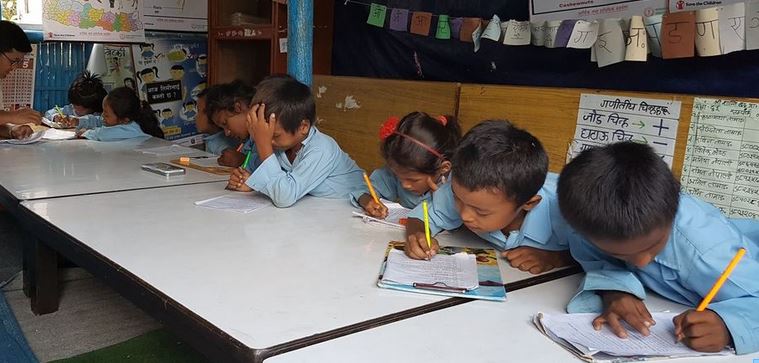Seismic Safety and Resilience of Schools in Nepal
Timeline of activities
Consortium
|
Protecting Nepal’s next generation children from earthquakesThis project aims at developing a comprehensive scheme for enhancing the seismic safety and resilience of school buildings in Nepal. The circle of resilience initiates from a holistic seismic hazard assessment considering refined geological mapping, 3D site and topographic effects as well as seismicity sequence using statistical clustering models. This will be followed by the development of a smart diagnostics expert system app for reliable pre- and post-earthquake structural inspection. Its core logic will be based on US FEMA and ATC-20i standards extended to address functionality risks, inspection bias reduction based on inspection error patterns identified in the existing school buildings databases in Greece and Turkey. The above state-of-the-art hazard and vulnerability assessments will lead to the risk-based prioritization of schools that need strengthening. Particular emphasis in the diagnostics algorithm will be placed in identifying buildings with minor-to moderate damage, whose safety could be substantially improved with innovative yet simple measures.
Along these lines, means of repair and retrofit will be identified by experimental testing of large and/or full scale, one storey-one classroom, 3D masonry and/or adobe/rammed earth simple buildings, as well as of one bay R/C infill frame, to be conducted at the shaking table of the University of Bristol and the University of Southampton in collaboration with the University of Bullafo, SUNY. Experiments will be co-designed with the project local partners in Nepal, where preliminary material testing will take place. The aim is to design a realistic testing campaign tailored to the construction characteristics of school buildings in Nepal. A deep understanding of the structural damage patterns will be obtained in the Laboratory by studying experimentally and verifying numerically, the cumulative damage under realistic mainshock and aftershock sequences, an issue that has never been studied at this extent. Innovative repair and retrofit techniques will be tested in order to assess and optimize their efficiency through an additional experimental set. Refined and simple solutions will be tested, co-produced and documented in the form of guidelines along with the local partners. An innovative concept of seismic isolation using natural materials will be the second major strand of experimental research for safer "sliding" construction of school buildings and shelters. This is aimed to provide a new alternative for low cost - high safety reconstruction. A comprehensive post-quake vulnerability assessment will then be developed accounting for regional materials and employing micro- and meso-fragility modelling for informed decision-making during the post-earthquake response, recovery and mitigation phases. This will build upon the existing emergency plans in Nepal with the specific aim to enrich the decision-making process by integrating post-quake shake maps in nearly real time. A tablet app will also be developed for reliable diagnostics of post-quake structural health based on the spectral-based FAST algorithm, a tested method in seismically active Mediterranean countries. An expert system will further link the identified damage states with the most appropriate repair/retrofit/rehabilitation techniques, as the latter have been identified, tested and certified previously in the Lab. During the entire duration of the project a series of workshops and training sessions will be organised in Nepal in order to interact with the local administration as well as the engineering and educational community. This interaction is deemed vital for the co-development of new concepts, the transfer of know-how and the sustainable construction of schools in both rural and urban areas of Nepal. |



